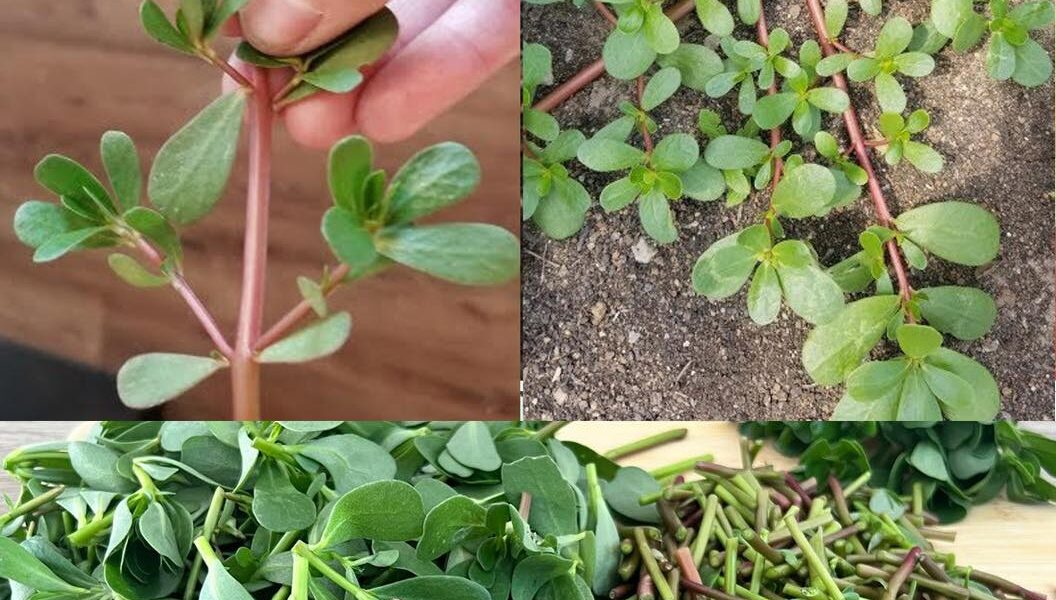How to Identify Poisonous Purslane and Spurge
Purslane and spurge are two types of plants that can be found in many parts of the world. Although they share some similar characteristics, it is essential to know how to tell them apart, as spurge can be toxic to humans and animals. In this article, we’ll explore the differences between purslane and spurge, as well as tips for identifying them correctly. 1. Purslane Purslane, also known by the scientific name Portulaca oleracea , is an annual herb that grows in many parts of the world. It is widely cultivated as an edible plant in some parts of the globe due to its fleshy, juicy leaves and slightly lemony taste. Here are some distinctive characteristics of purslane: Fleshy, Succulent Leaves : The leaves of purslane are thick and fleshy, making them easy to recognize. They have a crunchy texture and are often spatula-shaped. Colorful Flowers : Purslane produces small flowers in bright colors, including yellow and pink. Habitat : You can find purslane in gardens, lawns, curbs, and even between sidewalk cracks. Non-toxic : Purslane is edible and non-toxic to humans and animals. In fact, it is rich in vitamins and minerals. 2. Euphorbia Spurge is a genus of plants comprising many species, some of which are ornamental, while others are poisonous. Euphorbias are characterized by their milky latex which can cause skin and eye irritation. Here’s how to identify poisonous spurge: Milky Latex : One of the most distinctive characteristics of euphorbias is their milky latex that oozes when cut or broken. This latex is toxic and can cause skin and eye irritation. Narrow leaves : Unlike purslane, euphorbias generally have narrow, elongated leaves. However, there are a wide variety of euphorbia species, and some may have wider leaves. Often inconspicuous flowers : Euphorbia flowers can be small and inconspicuous, usually green, yellow or white. Varied Habitat : Euphorbias can be found in a variety of habitats, from gardens to wild areas to deserts. Toxicity : It is essential to note that many species of euphorbia are toxic. Irritant latex can cause health problems if it comes into contact with skin or eyes, and some species are toxic if ingested. 3. How to Avoid Confusion To avoid confusion between purslane and euphorbia, here are some useful tips: Examine the leaves : The fleshy leaves of purslane are usually a telltale sign. If you see narrow leaves with milky latex, it is likely poisonous spurge. Observe for latex : If you break a stem and it produces a milky latex, treat the plant with caution, as it may be a euphorbia. Get to know local species : Learn about the species of purslane and spurge that grow in your area. This will help you identify them more easily. Use protective gloves : When handling euphorbias, it is recommended to use protective gloves to avoid contact with the irritating latex. In conclusion, the distinction between purslane and euphorbia is essential to avoid any risk of poisoning. By understanding the distinctive characteristics of these plants, you can enjoy the benefits of purslane while avoiding the risks associated with toxic euphorbias. Always be careful when handling unfamiliar plants and, if in doubt, seek advice from a botanical expert.
Recette Ici: https://www.recettemarocaine365.com/comment-identifier-le-pourpier/?fbclid=IwAR34dcXbCLEx3GKGgVba6VPl-QFSyPYsvNnVAqLrn3bXcG9wI3HWlDfCwXY
